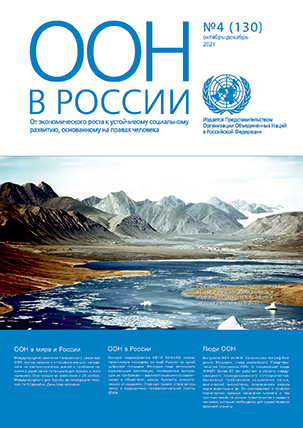Research findings on “Adolescent deaths from suicide in Russia”
Over 90% of deaths from suicide among adolescents are rooted in the disadvantaged family situation - research findings on “Adolescent deaths from suicide in Russia”
November30, 2011, Moscow.Russiaranks third in the world in terms of the number of suicides committed by adolescents, with its average suicide rate among the adolescent population being more than three times higher than the world’s average. These horrible statistics do not take into account attempted suicides as well as cases when suicides were qualified as accidents.
What drives young people to commit suicide? What are the high-risk groups for suicide among adolescents? Whatshouldbedonetopreventsuicides? To find out the answers to these and many more questions, UNICEF and the Federal Budget Entity “The Central Research Institute for Health Care Organization and Informatization” under the Ministry of Health and Social Development of the Russian Federation have conducted an integrated study entitled “Adolescent deaths from suicide in Russia”.
The study has revealed that depression and high levels of anxiety and aggression are common among young people today. While the level of adolescent depression in Western developed countries does not exceed 5%, the same level in Russia is hovering around 20%. Thoughts of suicide come to the mind of 45% of girls and 27% of young men in Russia.
Poverty is not the leading cause of suicide. According to various research data, up to 92% of suicides among children and adolescents are directly or indirectly rooted in their disadvantaged family situation (parental alcoholism, conflicts in the family, abusive treatment).
The research findings have again highlighted the problem of underreporting suicide mortality rates. The authors of the report indicate that only undeniable cases of suicide are registered in the official statistics, while the underlying cause of registered accidents, such as medication overdose, falling from height or being the only victim of a car-crash accident, often happens to be suicide. Therefore, the actual suicide rate among adolescents in Russia could be much higher.
A zone of an increased suicide risk among adolescents is formed on the basis of two geographic clusters – northwest territories in European Russia and Russia’s Far East and East Siberia territories. Regardless of the pivotal social transformations that took place in Russia in the 1990s and the 2000s, the vector “affluent West - disadvantaged East”, which took shape during the Soviet period, remains largely unchanged. The situation in Moscow and St.Petersburg in terms of suicide rates is relatively satisfactory, though at the same time, a higher indicator of undocumented suicides is registered in these regions.
According to Russian experts, the existing suicide prevention mechanisms are inefficient and they are poorly coordinated. In order to reduce adolescent suicide rates, suicide prevention activities should be aimed at early identification of suicide risks in families and interpersonal environment of adolescents. Health care, education and social security authorities should by all means be engaged in the prevention activities.
The experience, gained by countries which have made considerable progress in reducing adolescent suicide rates, shows that prevention activities should proceed along two basic lines – general and individual prevention activities, since an act of suicide is perceived both as an individual act of a human being and as a socio-psychological phenomenon. General prevention activities should help a person at the stage of development of suicidal tendencies, while individual prevention activities should help a person at the reversible stage of externally displayed suicidal behavior.
Multiple-level risk and protective factors for suicide determine the need for integrated suicide prevention, which would include both a medical aspect and a cultural/education aspect as well as measures to address a number of social issues. It has been established that no single risk factor is likely to be sufficient to cause a death from suicide unless it is combined with other factors. Much-needed all-round support should be offered to a young man burdened with numerous problems rather than taking measures to address only one symptom or problem behavior.
According to the authors of the study, measures for prevention of suicide among adolescents should focus on early crisis intervention with families and provision of timely social, psychological and other support services to particularly vulnerable adolescents and their families. Implementation of measures aiming to prevent alcohol and toxic substance abuse is also an important component of activities to help prevent adolescent suicide.
A full version of the report is available on the UNICEF web-site www.unicef.ru
For additional information please contact:
Anna Kochineva, UNICEF Communication Officer
Тел.: + 7 495 937-4812, Моб. +7 916-238-0154
Email: akochineva@unicef.org, Web: www.unicef.ru

